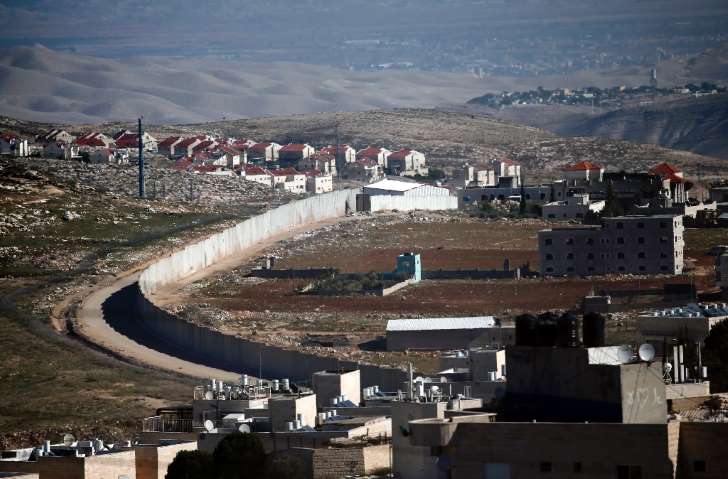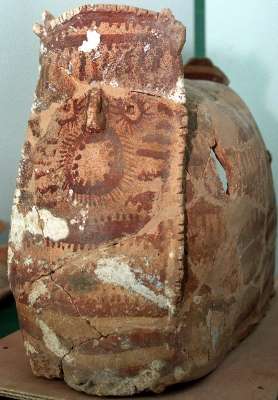February 17, 2016
Israeli authorities announced Wednesday they had uncovered findings proving for the first time the existence of an established human settlement in Jerusalem as far back as 7,000 years ago.

A section of Israel's separation barrier in east Jerusalem divides the Palestinian Shuafat refugee camp (right) from the Jewish settlement Pisgat Zeev
February 17, 2016
Israeli authorities announced Wednesday they had uncovered findings proving for the first time the existence of an established human settlement in Jerusalem as far back as 7,000 years ago.

A section of Israel's separation barrier in east Jerusalem divides the Palestinian Shuafat refugee camp (right) from the Jewish settlement Pisgat Zeev
A dig in the annexed east Jerusalem neighborhood Shuafat revealed two homes with parts of walls and floors intact, as well as "pottery vessels, flint tools, and a basalt bowl" characteristic of the Chalcolithic era, the Israel Antiquities Authority said.
The discoveries came to light during road work in the area.
Chalcolithic settlements have been found outside of Jerusalem, but prior to the Shuafat finding, only "fragmentary" remnants were unearthed in the city, according to the head of the authority's prehistory branch, Amnon Barzilai.
"Now in the new dig we found remnants of a village, an established village," he said.

A child's coffin dating from the Chalcolithic period more than 6,000 years ago on display in Jerusalem in 1999
In the Chalcolithic period humans were "still using stone tools, but began to create high-level ceramics and for the first time, copper tools as well," said Ronit Lupo, director of excavations at the authority.
They were also forming "established settlements with economies," Lupo said.
Researchers were long puzzled by the lack of hard evidence of Chalcolithic settlements in Jerusalem, which was a central route connecting the Dead Sea to the coastal area.
Chalcolithic settlements were found elsewhere in what is today Israel and Jordan.
Barzilai said the focus on Jerusalem's later historical eras could have led to researchers overlooking the Chalcolithic period, considered by some a bridge between antiquity and modern human communal existence.
"Now we can know that even in the periods prior to the First and Second Temples, even in the Chalcolithic period, it was an inhabited area," he said.
To Lupo, the new findings give closure to a long quest for Chalcolithic settlements in Jerusalem.
"For years in Jerusalem we had a feeling – we knew it was there somewhere but never found it. But here we found it," she said.
Courtesy: AFP
















































































































